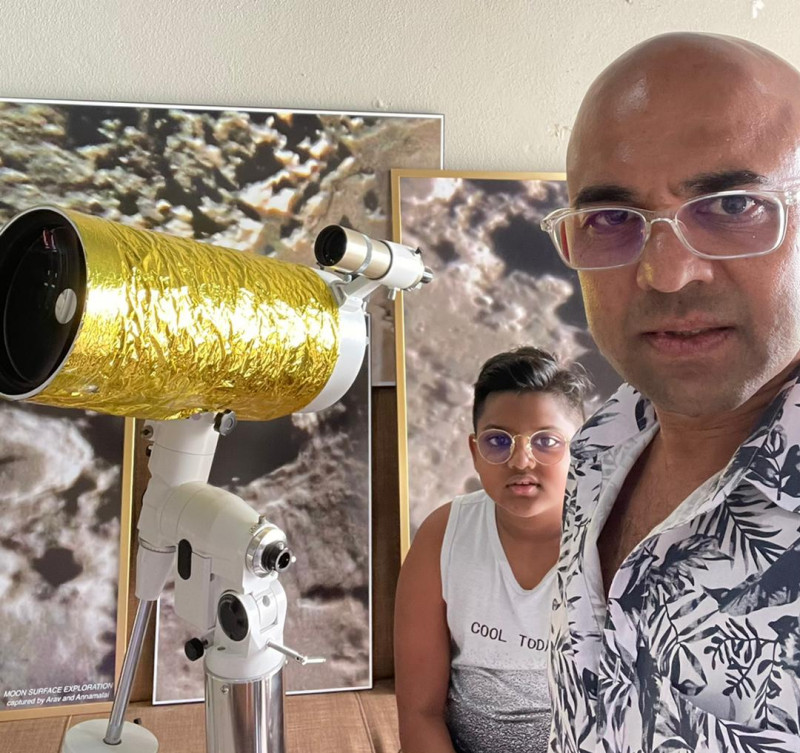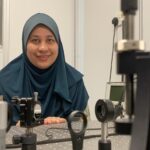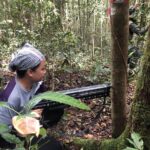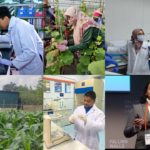WHILE most parents bond with their kids through vacations, entertainment, family events or even sports, a space enthusiast such as Annamalai Muthu blended art and science as part of his family time by scanning the skies with his son Arav. This father and son duo made a remarkable achievement by designing a high-powered telescope to make space discoveries.
They designed a unique telescopic device using an iPad to power an ultraviolet (UV)/ infrared space observation telescope. When interpreted through smartphones and iPads, the lens innovation could penetrate the clouds and dust surrounding the Moon, enabling clear images of the lunar surface and space to be captured.
The methodology of this invention was created by Annamalai and his team member, Istal Zainee bin Abdul Rahman. They also created a homegrown technology called the Invisible Security Technology, used in a printing process in 2004. The Home Ministry of Malaysia endorsed this technology, which granted pioneer status for their invention.
Are you intrigued by how a combination of a handheld device, UV and infrared lights with telescopy could produce such marvellous space photography? This combination harnesses wavelengths of light to capture and expose never-before-seen space and the lunar surface. This space photography bridges the science and arts by involving a variety of creative fields, such as fluorescent art, invisible art, UV/infrared art, and photography.
The captured space and lunar surface imagery would be immortalised and printed on high-quality satin paper. These images showcase the geology of the lunar surface. The type of paper on which these images were printed has a bearing on its quality; printing on an ordinary A4 paper yields a lower quality of image that fails to capture the lunar surface than using the satin A1 paper.
There are heated debates about the negative impact of long-term exposure of children to devices, such as smartphones and iPads. However, Annamalai and Arav’s discovery shows that smart devices can help budding future scientists understand and capture photographic evidence of space with much clarity with proper utilisation.
Additionally, Istal Zainee’s role in setting the UV Infrared light to the correct frequency is crucial in the photography process. Detecting fast-moving objects such as Asteroids and Meteors, Unidentified Aerial Phenomena (UAP/UFO/USO) , light-speed objects in our solar system with electromagnetic spectrum is very possible as it can be done in a methodological way. Annamalai believes that this knowledge can easily be taught to others with the proper funding, gadgets, and location. Overall, this will help nurture curiosity in the younger generation in space exploration and extra-terrestrial discovery and fuel their interest in the space industry. Annamalai highlighted that kids as young as 5 to 9 years old like Arav were able to detect potential impact of large asteroids, meteors, near moon and earth objects which contributes to human safety and civil aviation through this project.
Aside from contributing to the field of space exploration, this discovery also helped to mould budding space enthusiasts such as Arav, who is an asset to our nation. The bright nine-year-old has received recognitions from international organisations, including the United States National Aeronautics and Space Administration (NASA), European Space Agency (ESA) & Airbus Foundation 2020-2021.
The team (Annamalai & Arav) were also selected as presenters in the “Support Growth & Development Of A Sustainable Society On The Moon” programme organised by Moon Village Association’s Online Workshop Vienna, in cooperation with the Cyprus Space Exploration Organisation (CSEO).
The lunar surface photography and innovative methods, dubbed “Smartphone Photography UV Infrared Telescope Lens Innovation – Space & Lunar Observation Outreach for Children”, had won the Gold Award from SCINEX 2020 Exhibition Competition, hosted by Universiti Teknologi Mara (UiTM) and the Education Department of Negeri Sembilan. The invention also received a special award from the International World Invention Intellectual Property Associations (WIIPA) for lens innovation and lunar surface discovery. Plus, it also received a Gold Award and a Special Award from the Toronto International Society of Innovation & Advanced skills (TISIAS) Canada 2020.
A student at the Sekolah Sri Tenby & International School, Arav aspires to study space science and eventually explore the space medical field. He hopes this field of study will be available for youths in Malaysia so that space exploration will be a more enjoyable pursuit among his peers.
The global space industry is a multi-billion-dollar industry, valued at USD 447 billion in 2020. The space industry can drive economic growth in Malaysia, currently contributing to about 2% of the Malaysian Gross Domestic Product (GDP). Various space-related industries in Malaysia are flourishing but not positioned, including satellite communication and satellite navigation. One day, space tourism could be another possible inclusion to this list.
The story of this father-son duo inspires us to make science a part of our lifestyle, not just a part of our education. Science, technology, and innovation are the main drivers that will move our nation forward. Space studies could allow young Malaysian talents to carve their very own niches and help propel the country to greater heights.
Watch this video to see fascinating image of moon captured by the team:








